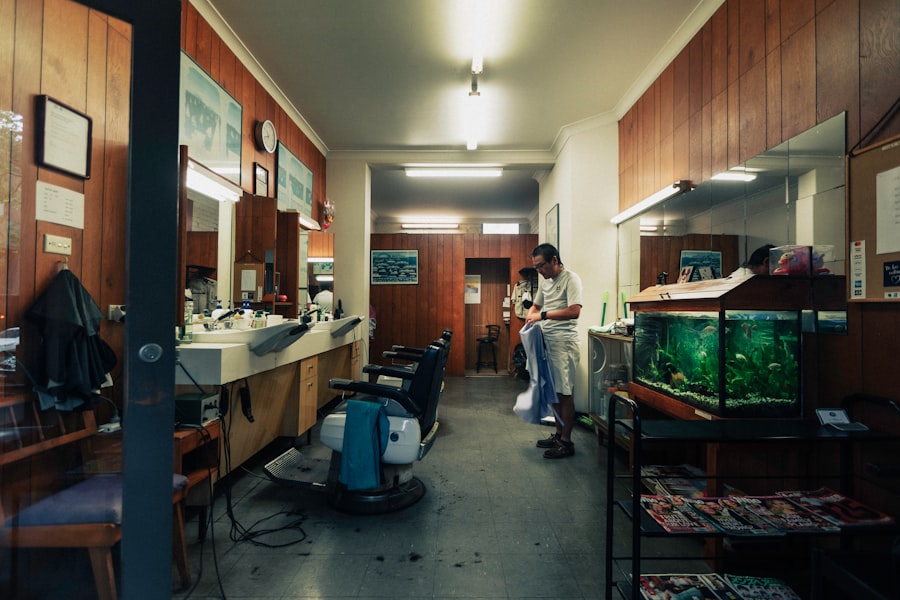
- By: admin
- Category: Commercial Floor Cleaning Machines
- 0 comment
Cleaning in confined spaces presents a unique set of challenges that can often be overlooked in the broader context of commercial and industrial cleaning. These spaces, which may include areas such as storage rooms, mechanical rooms, and even narrow hallways, require a tailored approach to ensure thorough cleanliness while maintaining safety and efficiency. The limited space can restrict movement, making it difficult for cleaners to manoeuvre effectively.
This can lead to incomplete cleaning or, worse, accidents if proper precautions are not taken. Moreover, confined spaces often accumulate dust, debris, and contaminants that can be hazardous to both the cleaning staff and the environment. For instance, in a manufacturing facility, grease and oil may build up in tight corners, creating not only a cleanliness issue but also a potential slip hazard.
Understanding these challenges is crucial for contract cleaners, building managers, and facility managers alike, as it allows them to develop strategies that ensure both safety and effectiveness in their cleaning operations. Please feel free to get in touch with us through our Contact Us page.
Summary
- Cleaning in confined spaces presents unique challenges such as limited access and ventilation
- Choosing the right tools and equipment, such as small brushes and vacuum attachments, is crucial for effective cleaning in tight spaces
- Safety precautions, such as wearing protective gear and using proper ventilation, are essential for cleaning in confined spaces
- To maximize efficiency, plan the cleaning process carefully and use tools that can reach difficult areas
- Common obstacles in confined space cleaning include limited visibility and the presence of hazardous materials
Choosing the Right Tools and Equipment for Cleaning in Confined Spaces
Selecting the appropriate tools and equipment is paramount when tackling the complexities of cleaning confined spaces. Traditional cleaning methods may not suffice; therefore, investing in specialised equipment designed for tight areas can significantly enhance efficiency. For example, using compact vacuum cleaners with flexible hoses can help reach those awkward corners that larger machines cannot access.
Additionally, tools such as extendable dusters and microfibre cloths can effectively capture dust without requiring excessive movement. Furthermore, the choice of cleaning agents is equally important. In confined spaces, the use of harsh chemicals can pose health risks due to limited ventilation.
Opting for eco-friendly and low-odour cleaning solutions not only ensures a safer environment for the cleaning staff but also contributes to better air quality for building occupants. By carefully selecting the right tools and products, cleaning professionals can navigate the challenges of confined spaces more effectively while maintaining high standards of cleanliness.
Safety Precautions and Best Practices for Cleaning in Tight Spaces

Safety should always be a top priority when cleaning in confined spaces. The risk of accidents increases significantly due to limited visibility and restricted movement. Therefore, implementing best practices is essential to mitigate these risks.
One fundamental precaution is to conduct a thorough risk assessment before commencing any cleaning task. This assessment should identify potential hazards such as electrical equipment, sharp objects, or chemical residues that may pose a threat to the cleaner’s safety. Additionally, providing appropriate personal protective equipment (PPE) is crucial.
Cleaners should be equipped with gloves, masks, and safety goggles to protect against exposure to harmful substances or physical injuries. Training staff on safe cleaning techniques is equally important; for instance, teaching them how to use ladders safely when accessing high or hard-to-reach areas can prevent falls and injuries. By prioritising safety through comprehensive training and risk assessments, facility managers can create a safer working environment for their cleaning teams.
Tips for Maximising Efficiency and Effectiveness in Confined Space Cleaning
Maximising efficiency in confined space cleaning requires strategic planning and execution. One effective approach is to implement a systematic cleaning schedule that prioritises high-traffic areas or those prone to dirt accumulation. For instance, in a warehouse setting, regularly scheduled cleanings of storage racks and shelving units can prevent the build-up of dust and debris, making subsequent cleanings easier and more efficient.
Moreover, employing a team-based approach can enhance productivity. Assigning specific roles within the cleaning team allows for a division of labour that can expedite the process. For example, while one team member focuses on vacuuming tight corners, another can handle surface wiping or sanitising equipment.
This collaborative effort not only speeds up the cleaning process but also ensures that all areas receive adequate attention. By adopting these strategies, contract cleaners can achieve a higher level of effectiveness while navigating the challenges posed by confined spaces.
Overcoming Common Obstacles and Difficulties in Cleaning Tricky Spaces
Cleaning tricky spaces often comes with its own set of obstacles that can hinder progress. One common difficulty is dealing with clutter or obstructions that may impede access to certain areas. In industrial settings, equipment or materials may be stored haphazardly, making it challenging for cleaners to reach all surfaces effectively.
To overcome this issue, facility managers should establish clear protocols for maintaining organisation within these spaces. Regular audits can help identify areas that require decluttering or reorganisation. Another significant challenge is managing time constraints while ensuring thorough cleaning.
In busy commercial environments, downtime must be minimised to avoid disrupting operations. Implementing efficient cleaning techniques such as using multi-surface cleaners or employing quick-drying solutions can help address this issue. For instance, using a fast-acting disinfectant allows cleaners to sanitise surfaces without lengthy drying times, enabling them to move on to other tasks more swiftly.
By proactively addressing these common obstacles, cleaning teams can maintain high standards of cleanliness without compromising efficiency.
Proper Ventilation and Air Quality Management in Confined Space Cleaning

Proper ventilation is critical when cleaning confined spaces, as inadequate airflow can lead to the accumulation of harmful airborne particles and chemicals. In many industrial settings, such as factories or warehouses, the presence of dust and fumes can pose serious health risks to both cleaners and employees. Therefore, ensuring adequate ventilation during cleaning operations is essential for maintaining air quality.
One effective strategy is to utilise portable air filtration systems that can be deployed in confined areas during cleaning activities. These systems help capture airborne contaminants and improve overall air quality. Additionally, facility managers should consider scheduling cleanings during off-peak hours when fewer employees are present, allowing for better ventilation without disrupting daily operations.
By prioritising air quality management during confined space cleaning, organisations can safeguard the health of their workforce while ensuring a clean environment.
Importance of Regular Maintenance and Cleaning in Confined Spaces
Regular maintenance and cleaning in confined spaces are vital for several reasons. Firstly, consistent upkeep prevents the accumulation of dirt and grime that can lead to more significant issues down the line. For example, neglecting to clean machinery in tight spaces can result in malfunctions or breakdowns due to dust build-up affecting performance.
By establishing a routine maintenance schedule, facility managers can ensure that all areas are kept clean and functional. Moreover, regular cleaning contributes to a healthier work environment by reducing allergens and contaminants that could affect employee well-being. In settings such as healthcare facilities or food production plants, maintaining cleanliness is not just about aesthetics; it directly impacts health outcomes.
Implementing a proactive approach to maintenance ensures that confined spaces remain safe and hygienic for all occupants.
Seeking Professional Help for Cleaning in Extremely Tricky and Confined Spaces
In some cases, the challenges presented by extremely tricky or confined spaces may exceed the capabilities of in-house cleaning teams. In such instances, seeking professional help can be a wise decision. Professional cleaning services specialise in tackling complex environments with expertise and advanced equipment designed specifically for challenging tasks.
For example, specialised teams trained in industrial cleaning techniques are equipped to handle hazardous materials safely while adhering to strict regulations. They possess the knowledge required to navigate difficult spaces efficiently while ensuring compliance with health and safety standards. By enlisting professional assistance when necessary, facility managers can ensure that even the most challenging areas are cleaned thoroughly and safely.
In conclusion, navigating the complexities of cleaning in confined spaces requires a multifaceted approach that prioritises safety, efficiency, and effectiveness. By understanding the unique challenges posed by these environments and implementing best practices tailored to their needs, contract cleaners and facility managers can maintain high standards of cleanliness while safeguarding their teams’ well-being. **FAQs** 1.
What are some common confined spaces that require specialised cleaning?
Common confined spaces include storage rooms, mechanical rooms, basements, attics, narrow hallways, and areas around machinery in industrial settings. 2. How often should confined spaces be cleaned?
The frequency of cleaning depends on the specific environment; however, regular maintenance schedules should be established based on usage patterns and contamination risks.
3. What types of PPE are recommended for cleaning confined spaces?
Recommended PPE includes gloves, masks or respirators (if chemicals are used), safety goggles, and non-slip footwear to protect against potential hazards. 4.
Can I use standard cleaning products in confined spaces?
While some standard products may be suitable, it’s advisable to choose eco-friendly or low-odour alternatives to minimise health risks associated with poor ventilation. 5. When should I consider hiring professional cleaners for confined spaces?
If your team lacks the necessary training or equipment to safely clean extremely tricky or hazardous areas, it’s wise to seek professional assistance to ensure thoroughness and compliance with safety regulations.
FAQs
What are some examples of tricky, confined spaces that require cleaning?
Some examples of tricky, confined spaces that require cleaning include crawl spaces, attics, narrow corridors, and tight storage areas. These spaces often have limited access and can be challenging to clean effectively.
What are the challenges of cleaning in tricky, confined spaces?
The challenges of cleaning in tricky, confined spaces include limited access, poor ventilation, potential safety hazards, and difficulty in maneuvering cleaning equipment. These spaces may also have hard-to-reach areas and hidden dirt and debris.
What are some tips for mastering cleaning in tricky, confined spaces?
Some tips for mastering cleaning in tricky, confined spaces include using specialized cleaning tools and equipment, ensuring proper ventilation, wearing appropriate personal protective equipment, and following safety protocols. It is also important to plan the cleaning process carefully and to be thorough in inspecting and addressing all areas.
What are the safety considerations when cleaning in tricky, confined spaces?
Safety considerations when cleaning in tricky, confined spaces include assessing potential hazards such as electrical wiring, sharp objects, and unstable surfaces. It is important to have proper lighting, ventilation, and communication systems in place, as well as to follow relevant health and safety regulations.
What are the benefits of mastering cleaning in tricky, confined spaces?
Mastering cleaning in tricky, confined spaces can lead to improved indoor air quality, reduced risk of pest infestations, and a safer and more pleasant environment. It can also help prevent potential damage to the structure and contents of the space.
